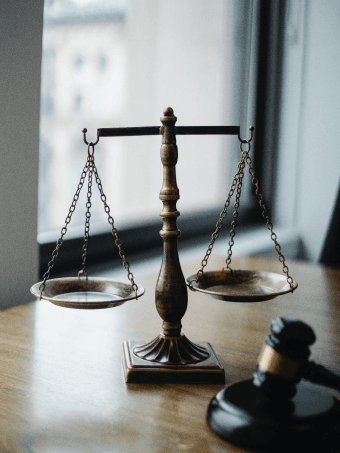Registering a trademark is not rocket science, but only if you take the process seriously. After all the time and money spent on advertising the products and services, the last thing you want to hear from your attorney is that your name or logo cannot be protected and your competitors can freely use your name, logo, or catch-phrase to describe and sell their products. Bearing this problem in mind, we prepared a handy list of some common mistakes people make when it comes to trademark registration.
Not consulting trademark attorney before registration
Trademark registration is a tricky process that is hard to navigate without appropriate legal expertise and experience. Therefore, it is highly recommended to contact a professional trademark attorney who can considerably ease the trademark registration for you. Make sure that the attorney you choose has relevant experience in filing trademark applications, for example, by going to IPO’s website and searching their name to see how many trademarks they have previously registered. Many business owners initially feel confident enough to go through the application process on their own, only to then get rejected and forced to refile. You can easily avoid this costly and time-consuming mistake by working with an experienced trademark attorney from the beginning.
Not making trademark distinct enough
Trademark attorney will also help you to make sure that your trademark is distinct enough. In general, when choosing a name for your company, you should try to avoid words that are too generic, descriptive, or confusingly similar to existing trademarks. Your trademark name shouldn’t contain descriptive information regarding an ingredient, quality, characteristic, function, feature, purpose, or use of the product or service. So Delicious Strawberry Ice Cream might be not the best choice for an ice cream brand.
Not conducting prior search for conflicting trademarks
As mentioned previously, another problem commonly associated with creating a distinct trademark is making sure that it is not too similar to already registered brands. Many starting businesses that tried to register their trademarks without prior research have either suffered rejection directly from the trademark office or received opposition from their competitors who registered before them. Trademark law strongly prioritizes companies that filed the trademark application first, even if the registration process was not yet completed. As a result, the IPOs in general recommends searching their trademark filing database prior to starting with the registration.
At Trama, we offer a free trademark search, providing results within 24 hours. This search can help you move forward with confidence, knowing that your trademark is clear for registration.
Not choosing correct trademark classes
When filing a trademark application, you must indicate the classes of goods and services which will be associated with and protected by the trademark. There are 45 categories of goods and services to choose from. Classes 1 through 34 cover goods and classes 35 through 45 cover services. Be careful with what classes you choose, because in the end your trademark will protect the brand only in the selected classes. If you are unsure what classes are applicable to your products, we have another article that explains the process in a greater detail: How to choose the right classes of goods and services when registering a trademark
Make sure to keep in mind your business expansion beyond its current offerings. Since existing trademark applications cannot be extended to include an additional class of goods and services, the inclusion of extra classes in which you plan to expand into in the near future may be advisable.
At the same time, it is important to pay a close attention towards meeting the criterion of filing in a good faith. If your application contains false or misleading information, your company risks having its trademark revoked.
Not using all benefits after registration
Last thing you want to make sure of is that you are using all possible perks and benefits that a trademark can offer to your business. When it comes to search engines, a registered trademark grants its owners an exclusive right to use the given keyword among search terms as well as product/service description, simultaneously boosting brands visibility and discouraging competitors from taking advantage of your keywords. Registered trademark is also a key requirement that allows businesses to enjoy exclusive brand protection from Amazon. Amazon Brand Registry was designed to promote and protect its qualifying sellers, ensuring that generic brands can’t claim the benefits of branded products.
Trademark registration might seem like a complicated process at first, but the resulting extensive brand protection makes it a worthwhile effort. Avoiding mistakes described in this article will guarantee you a secure trademark that will become a valuable asset of your business and protect your brand from any potential infringements.
FAQs - Common mistakes to avoid when registering a trademark
1.
A registered trademark can enhance a company’s online presence by granting exclusive rights to use specific keywords related to their brand in search engines. This not only boosts brand visibility but also prevents competitors from using those keywords to mislead customers or capitalize on your brand’s reputation.
2.
Filing a trademark application with false or misleading information can lead to the trademark being revoked. This not only results in the loss of trademark protection but could also damage the company’s reputation and lead to legal penalties.
3.
Anticipating future business growth is crucial because once a trademark is registered, you cannot extend it to cover new classes of goods and services without filing a new application. Including additional classes during the initial registration can save time and costs, ensuring broader protection for future products or services.


